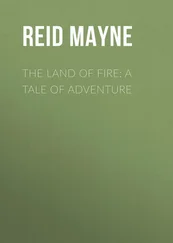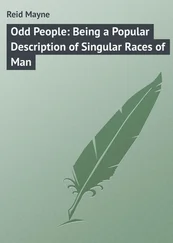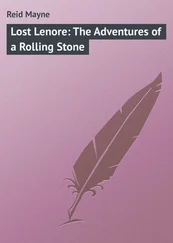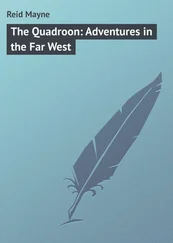Mayne Reid - Popular Adventure Tales
Здесь есть возможность читать онлайн «Mayne Reid - Popular Adventure Tales» — ознакомительный отрывок электронной книги совершенно бесплатно, а после прочтения отрывка купить полную версию. В некоторых случаях можно слушать аудио, скачать через торрент в формате fb2 и присутствует краткое содержание. Жанр: literature_19, foreign_antique, foreign_prose, foreign_children, на английском языке. Описание произведения, (предисловие) а так же отзывы посетителей доступны на портале библиотеки ЛибКат.
- Название:Popular Adventure Tales
- Автор:
- Жанр:
- Год:неизвестен
- ISBN:нет данных
- Рейтинг книги:3 / 5. Голосов: 1
-
Избранное:Добавить в избранное
- Отзывы:
-
Ваша оценка:
- 60
- 1
- 2
- 3
- 4
- 5
Popular Adventure Tales: краткое содержание, описание и аннотация
Предлагаем к чтению аннотацию, описание, краткое содержание или предисловие (зависит от того, что написал сам автор книги «Popular Adventure Tales»). Если вы не нашли необходимую информацию о книге — напишите в комментариях, мы постараемся отыскать её.
Popular Adventure Tales — читать онлайн ознакомительный отрывок
Ниже представлен текст книги, разбитый по страницам. Система сохранения места последней прочитанной страницы, позволяет с удобством читать онлайн бесплатно книгу «Popular Adventure Tales», без необходимости каждый раз заново искать на чём Вы остановились. Поставьте закладку, и сможете в любой момент перейти на страницу, на которой закончили чтение.
Интервал:
Закладка:
“These little animals seem to form a link between the squirrels and rabbits. On the side of the squirrels they very naturally join on, if I may use the expression, to the ground-squirrel, and some of them, differ but little in their habits from many of the latter. Other species, again, are more allied to the rabbits, and less like the squirrels; and there are two or three kinds that I should say – using a Yankee expression – have a 'sprinkling' of the rat in them. Some, as the ground-hog, or wood-chuck of the United States, are as large as rabbits, while others, as the leopard-marmot, are not bigger than Norway rats.
“Some species have cheek-pouches, in which they can carry a large quantity of seeds, nuts, and roots, when they wish to hoard them up for future use. These are the spermophiles, and some species of these have more capacious pouches than others. Their food differs somewhat, perhaps according to the circumstances in which they may be placed. In all cases it is vegetable. Some, as the prairie-dogs, live upon grasses, while others subsist chiefly upon seeds, berries, and leaves.
“It was long supposed that the marmots, like the squirrels, laid up stores against the winter. I believe this is not the case with any of the different species. I know for certain that most of them pass the winter in a state of torpidity, and of course require no provisions, as they eat nothing during that season. In this we observe one of those cases in which Nature so beautifully adapts a creature to its circumstances. In the countries where many of the marmots are found, so severe are the winters, and so barren the soil, that it would be impossible for these creatures to get a morsel of food for many long months.
“During this period, therefore, Nature suspends her functions, by putting them into a deep, and, for aught we know to the contrary, a pleasant sleep. It is only when the snow melts, under the vernal sun, and the green blades of grass and the spring flowers array themselves on the surface of the earth, that the little marmots make their appearance again. Then the warm air, penetrating into their subterranean abodes, admonishes them to awake from their protracted slumber, and come forth to the enjoyment of their summer life. These animals may be said, therefore, to have no winter. Their life is altogether a season of summer and sunshine.”
“Some of the marmots,” continued Lucien, “live in large communities, as the prairie dogs; others, in smaller tribes, while still other species lead a solitary life, going only in pairs, or at most in families. Nearly all of them are burrowing animals, though there are one or two species that are satisfied with a cleft in the rock, or a hole among loose stones for their nests. Some of them are tree-climbers, but it is supposed they only ascend trees in search of food, as they do not make their dwellings there. Many of the species are very prolific, the females bringing forth eight, and even ten young at a birth.
“The marmots are extremely shy and watchful creatures. Before going to feed, they usually reconnoitre the ground from the tops of their little mounds. Some species do not have such mounds, and for this purpose ascend any little hillock that may be near. Nearly all have the curious habit of placing sentries to watch while the rest are feeding. These sentries station themselves on some commanding point, and when they see an enemy approaching give warning to the others by a peculiar cry. In several of the species this cry resembles the syllables 'seek-seek' repeated with a hiss. Others bark like 'toy-dogs,' while still other kinds utter a whistling noise, from which one species derives its trivial name of 'whistler' among the traders, and is the 'siffleur' of the Canadian voyageurs.
“The 'whistler's' call of alarm can be heard at a great distance; and when uttered by the sentinel is repeated by all the others as far as the troop extends.
“The marmots are eaten both by Indians and white hunters. Sometimes they are captured by pouring water into their burrows; but this method only succeeds in early spring, when the animals awake out of their torpid state, and the ground is still frozen hard enough to prevent the water from filtering away. They are sometimes shot with guns; but, unless killed upon the spot, they will escape to their burrows, and tumble in before the hunter can lay his hands upon them.”
CHAPTER XVII.
THE BLAIREAU, THE “TAWNIES,” AND THE “LEOPARDS.”
Perhaps Lucien would have carried his account of the marmots still farther – for he had not told half what he knew of their habits – but he was at that moment interrupted by the marmots themselves. Several of them appeared at the mouths of their holes; and, after looking out and reconnoitring for some moments, became bolder, and ran up to the tops of their mounds, and began to scatter along the little beaten paths that led from one to the other. In a short while as many as a dozen could be seen moving about, jerking their tails, and at intervals uttering their seek-seek.
Our voyageurs saw that there were two kinds of them, entirely different in colour, size, and other respects. The larger ones were of a greyish yellow above, with an orange tint upon the throat and belly. These were the “tawny marmots,” called sometimes “ground-squirrels,” and by the voyageurs, “siffleurs,” or “whistlers.”
The other species seen were the most beautiful of all the marmots. They were very little smaller than the tawny marmots; but their tails were larger and more slender, which rendered their appearance more graceful. Their chief beauty, however, lay in their colours and markings. They were striped from the nose to the rump with bands of yellow and chocolate colour, which alternated with each other, while the chocolate bands were themselves variegated by rows of yellow spots regularly placed. These markings gave the animals that peculiar appearance so well known as characterising the skin of the leopard, hence the name of these little creatures was “leopard marmots.”
It was plain from their actions that both kinds were “at home” among the mounds, and that both had their burrows there. This was the fact, and Norman told his companion that the two kinds are always found together, not living in the same houses, but only as neighbours in the same “settlement.” The burrows of the “leopard” have much smaller entrances than those of their “tawny kin,” and run down perpendicularly to a greater depth before branching off in a horizontal direction. A straight stick may be thrust down one of these full five feet before reaching an “elbow.”
The holes of the tawny marmots, on the contrary, branch off near the surface, and are not so deep under ground. This guides us to the explanation of a singular fact – which is, that the “tawnies” make their appearance three weeks earlier in spring than the “leopards,” in consequence of the heat of the sun reaching them sooner, and waking them out of their torpid sleep.
While these explanations were passing among the boys, the marmots had come out, to the number of a score, and were carrying on their gambols along the declivity of the hill. They were at too great a distance to heed the movements of the travellers by the camp fire. Besides, a considerable valley lay between them and the camp, which, as they believed, rendered their position secure. They were not at such a distance but that many of their movements could be clearly made out by the boys, who after a while noticed that several furious battles were being fought among them. It was not the “tawnies” against the others, but the males of each kind in single combats with one another.
They fought like little cats, exhibiting the highest degree of boldness and fury; but it was noticed that in these conflicts the leopards were far more active and spiteful than their kinsmen. In observing them through his glass Lucien noticed that they frequently seized each other by the tails, and he further noticed that several of them had their tails much shorter than the rest. Norman said that these had been bitten off in their battles; and, moreover, that it was a rare thing to find among the males, or “bucks,” as he called them, one that had a perfect tail!
Читать дальшеИнтервал:
Закладка:
Похожие книги на «Popular Adventure Tales»
Представляем Вашему вниманию похожие книги на «Popular Adventure Tales» списком для выбора. Мы отобрали схожую по названию и смыслу литературу в надежде предоставить читателям больше вариантов отыскать новые, интересные, ещё непрочитанные произведения.
Обсуждение, отзывы о книге «Popular Adventure Tales» и просто собственные мнения читателей. Оставьте ваши комментарии, напишите, что Вы думаете о произведении, его смысле или главных героях. Укажите что конкретно понравилось, а что нет, и почему Вы так считаете.












